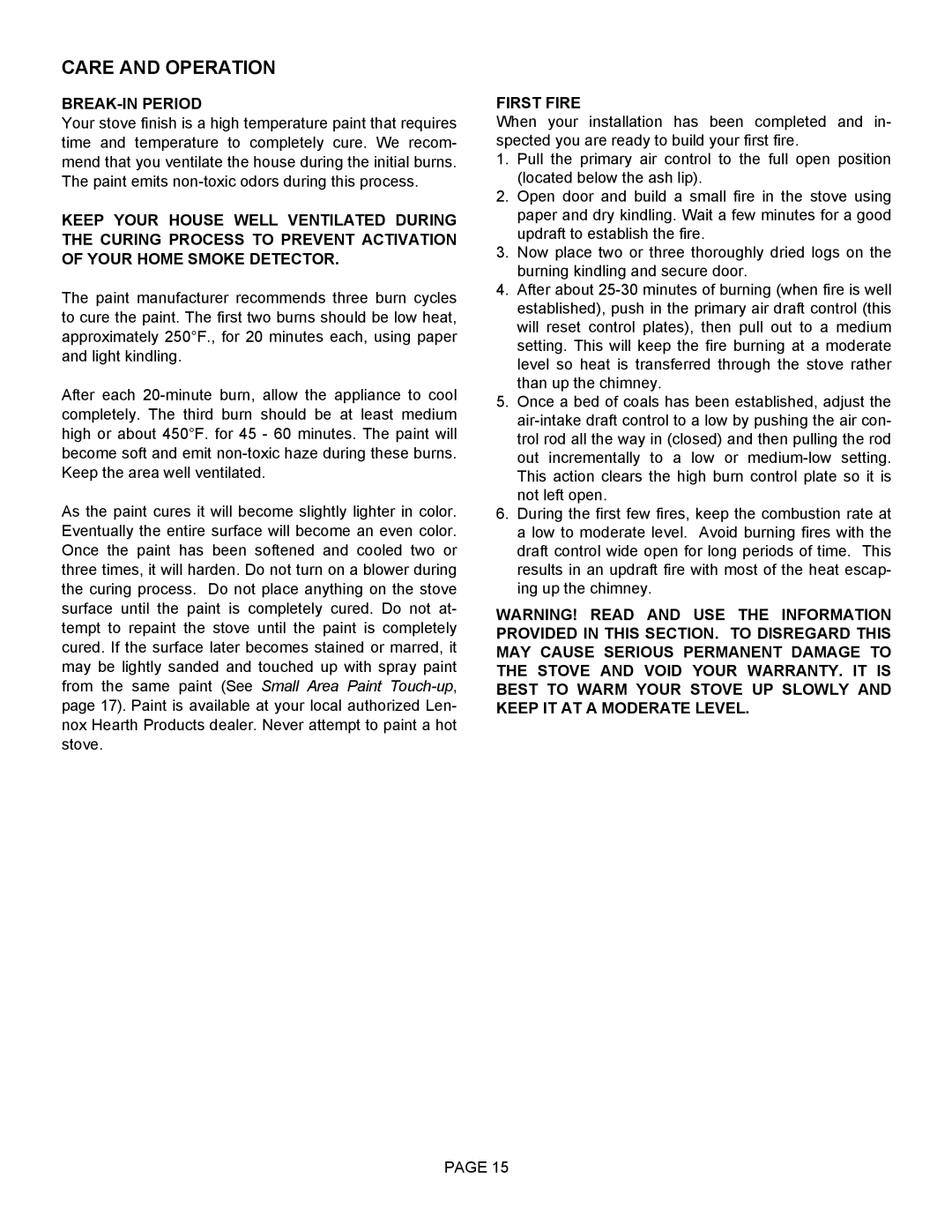CARE AND OPERATION
BREAK-IN PERIOD
Your stove finish is a high temperature paint that requires time and temperature to completely cure. We recom- mend that you ventilate the house during the initial burns. The paint emits
KEEP YOUR HOUSE WELL VENTILATED DURING THE CURING PROCESS TO PREVENT ACTIVATION OF YOUR HOME SMOKE DETECTOR.
The paint manufacturer recommends three burn cycles to cure the paint. The first two burns should be low heat, approximately 250°F., for 20 minutes each, using paper and light kindling.
After each
As the paint cures it will become slightly lighter in color. Eventually the entire surface will become an even color. Once the paint has been softened and cooled two or three times, it will harden. Do not turn on a blower during the curing process. Do not place anything on the stove surface until the paint is completely cured. Do not at- tempt to repaint the stove until the paint is completely cured. If the surface later becomes stained or marred, it may be lightly sanded and touched up with spray paint from the same paint (See Small Area Paint
FIRST FIRE
When your installation has been completed and in- spected you are ready to build your first fire.
1.Pull the primary air control to the full open position (located below the ash lip).
2.Open door and build a small fire in the stove using paper and dry kindling. Wait a few minutes for a good updraft to establish the fire.
3.Now place two or three thoroughly dried logs on the burning kindling and secure door.
4.After about
5.Once a bed of coals has been established, adjust the
6.During the first few fires, keep the combustion rate at a low to moderate level. Avoid burning fires with the draft control wide open for long periods of time. This results in an updraft fire with most of the heat escap- ing up the chimney.
WARNING! READ AND USE THE INFORMATION PROVIDED IN THIS SECTION. TO DISREGARD THIS MAY CAUSE SERIOUS PERMANENT DAMAGE TO THE STOVE AND VOID YOUR WARRANTY. IT IS BEST TO WARM YOUR STOVE UP SLOWLY AND KEEP IT AT A MODERATE LEVEL.
PAGE 15
